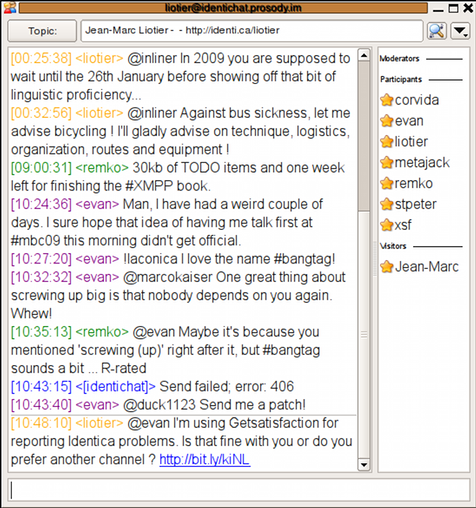Wipro, online cooperation and the art of asking questions
I sometimes get requests for help. Often they are smart questions and I’m actually somewhat relevant to them – for example questions about a script or an article that I wrote, or an experience I had. But sometimes it is not the case. This message I received today is particularly bad, so I thought it might be a public service to share it as an example of what not to do. This one is especially appalling because it comes not from some wet-behind-the-ears teenager to whom I would gracefully have issued a few hints and a gentle reminder of online manners, but from the inside of the corporate network of Wipro – a company that has a reputation as a global IT services organization.
From: xxxxxx.kumar@wipro.com
Subject: Perl
To: jim@liotier.org
Date: Thu, 29 Jan 2009 16:22:32 +0530
Hi Jim,
Could you please help me in finding out the solution for my problem. Iam new to perl i have tried all the options whatever i learned but couldn’t solve. Please revert me if you know the solution.
Here is the problem follows:
Below is the XML in which you could see the lines with AssemblyVersion and Version in each record i need to modify these values depending on some values which i get from perforce. Assuming hardcode values as of now need to change those values upon user wish using Perl. Upon changing these lines it should effect in existing file .
<FileCopyInfo>
<Entries>
<Entry>
<DeviceName>sss</DeviceName>
<ModuleName>general1</ModuleName>
<AssemblyVersion>9</AssemblyVersion>
<Language>default</Language>
<Version>9</Version>
<DisplayName>Speech – eneral</DisplayName>
<UpdateOnlyExisting>false</UpdateOnlyExisting>
</Entry>
<Entry>
<DeviceName>sss</DeviceName>
<ModuleName>general2</ModuleName>
<AssemblyVersion>9</AssemblyVersion>
<Language>default</Language>
<Version>9</Version>
<DisplayName>Speech – recog de_DE</DisplayName>
<UpdateOnlyExisting>false</UpdateOnlyExisting>
</Entry>
</Entries>
</FileCopyInfo>
Thanks & Regards,
Xxxxxxx
From what I gather from the convoluted use of approximative English, the problem is about changing the value of two XML elements in a file. Can anyone believe that this guy has even tried to solve this simple problem on his own ? It is even sadder that he tries to obtain answers by spamming random strangers by mail, soliciting answers that will never be shared with the wider world. Least he could have done is posting his message on a Perl forum so that others with similar questions can benefit from the eventual answer.
Had he performed even a cursory Google search, he would have found that one of his compatriots has done exactly that and gotten three different answers to a similar question, letting him choose between XML::Twig, XML::Rules and XML::Simple. These are just three – but the Perl XML FAQ enumerates at least a dozen CPAN modules for manipulating XML data. The documentation for any of them or the examples in the FAQ would also have put him on the track to a solution.
Everyone can be clueless about something and learning is a fundamental activity for our whole lives. But everyone can do some research, read the FAQ, ask smart questions and make sure that the whole community benefits from their learning process, especially as it doe not cost any additional effort. Knowledge capitalization within a community of practice is such an easy process with benefits for everyone involved that I don’t understand why it is not a universally drilled reflex.
The funny part is that while I’m ranting about it and wielding the cluebat over the head of some random interloper, I realize that the same sort of behavior is standard internally in a very large company I know very well, because a repository of community knowledge has not even been made available for those willing to share. Is there any online community without a wiki and a forum ?
Ten years ago I was beginning to believe that consulting opportunities in knowledge management were drying up because knowledge management skills had entered the mainstream and percolated everywhere. I could not be more wrong : ten years of awesome technological progress have proved beyond reasonable doubt that technology and tools are a peripheral issue : knowledge management is about the people and their attitudes; it is about cooperation. This was the introduction of my graduation paper ten years ago, with the prisoner’s dilemma illustrating cooperation issues – and it is today still as valid as ever.
